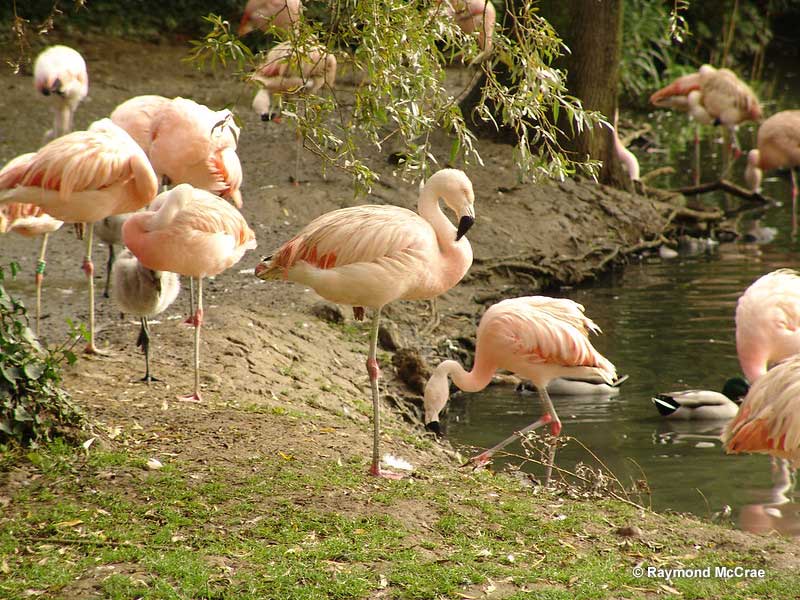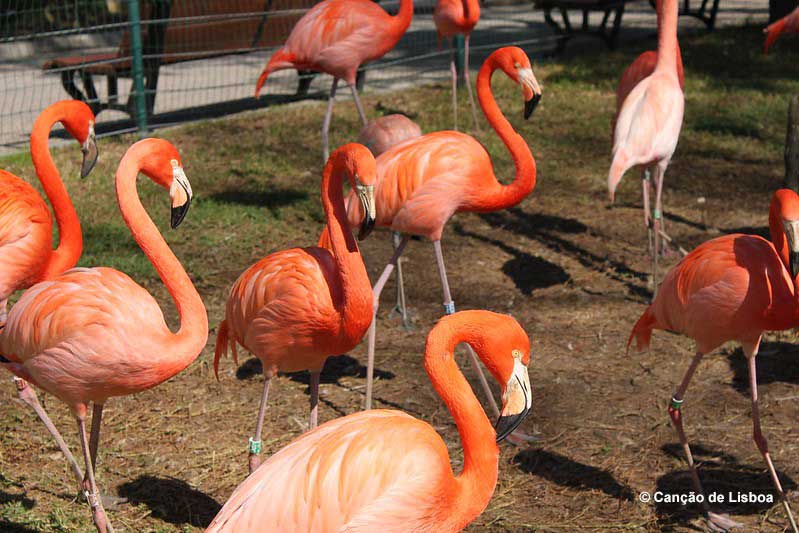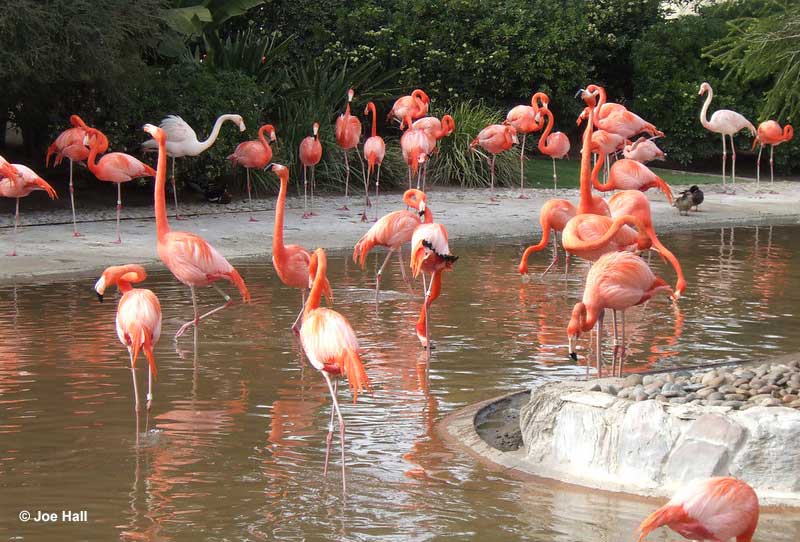
In Medieval England, aristocrats got the kick out of imagining colorful collective nouns for various creatures – including birds.
Someone must have had a real burst of creativity when they called a group of flamingos ‘a flamboyance.’
Why did the flamingos get a name that has nothing to do with the name of the species? Or does it?
Let’s embark on a little bird-inspired linguistic journey to find more answers!
On this page
What is a Group of Flamingos Called?
Flamingos are unique birds known for their distinctive body shape – long legs, elongated, curved necks, and the banana-shaped-bills.
Interestingly (and fabulously!), an archaic name for a group of flamingos is ‘a flamboyance.’
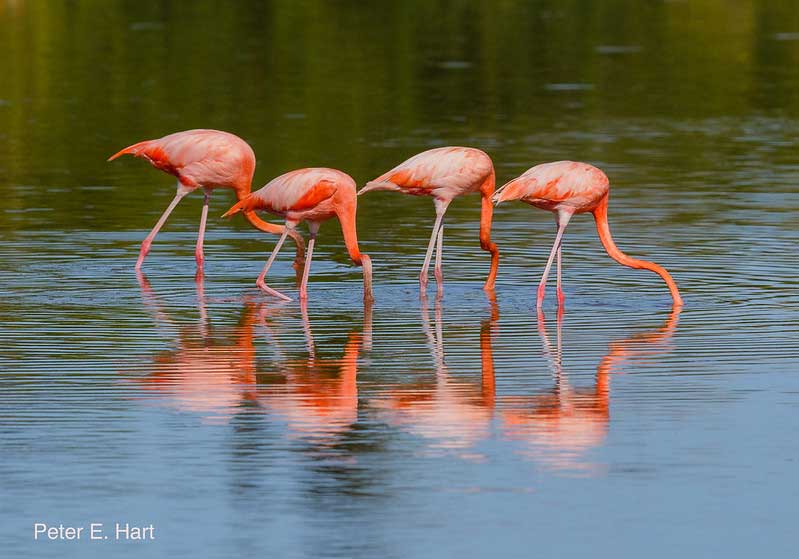
Still, in scientific terms, a group of flamingos has a very plain name – a flock of flamingos.
Belonging to a special bird order scientifically called Phoenicopteridae, there are six known existing species of flamingos. These are:
- American Flamingo
- Greater Flamingo
- Lesser Flamingo
- Chilean Flamingo
- Andean Flamingo
- James’s Flamingo
- American Flamingo
The Greater Flamingo is the largest and most widespread species in suitable habitats across Eurasia and Africa. Thus, it is the one most likely to be associated with the flamboyant communal name in the old world.
Why is It Called Flamboyance?
If you are unfamiliar with the word, flamboyance is a noun stemming from the adjective flamboyant.
As per Merriam-Webster Dictionary, it denotes someone or something “marked by or given to strikingly elaborate or colorful display or behavior.”
In this context, ‘flamboyant’ and ‘flamboyance’ are words (and fancy ones) describing someone as colorful, strikingly stylish, flashy, dazzling, and perhaps a bit extravagant and eccentric.
Another meaning of flamboyant is related mostly to architecture and stands for an ornament “characterized by waving curves suggesting flames.”
Flamboyance Etymology
Now that we know the term’s meaning, it is time to look at its etymology or origin.
The word ‘flamboyant’ actually comes from the old French word for flame. Naturally, the flame’s brightness, warm colors, and playfulness have all inspired people of old to connect it to the above-described traits.
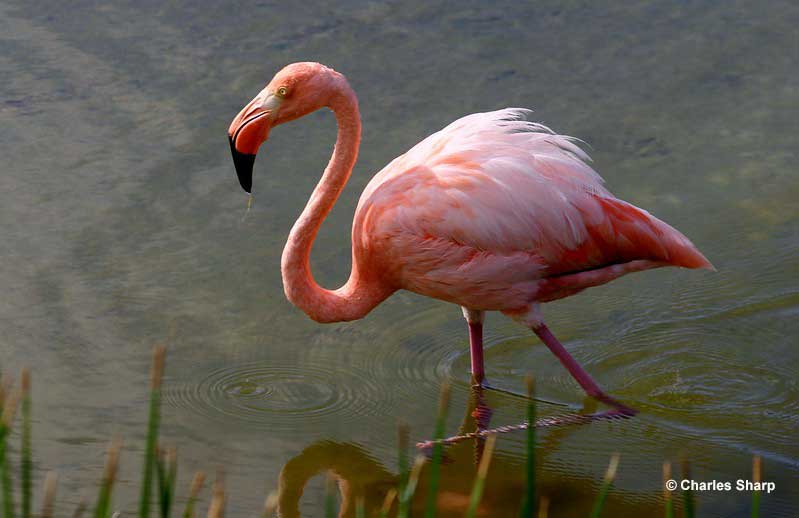
Remember the question about whether the word flamboyant has any true connection to the Flamingo or not?
Well, the word “flamingo” originates from the Latin word ‘flamma,’ meaning – you’ve guessed it – ‘a flame.’ In Spanish and Portuguese, ‘flamengo’ literally means flame-colored.
So basically, both ‘flamingo’ and ‘flamboyance’ are nouns whose core meaning is related to fire and flames.
Can you guess why?
The Flamboyant Flamingo
Did you know that a flamingo’s pink feathers come from its diet of shrimp and other crustaceans?
The color of a flamingo can vary depending on the species, the habitat, and the diet. The vivid flamingo coloration is actually secondary. It doesn’t come from their own pigment but from the food they eat.
All flamingos are filter-feeders that squeeze out tiny organisms from the water of salty lakes they inhabit. The tiny shrimp contain colored substances called carotenoids. When ingested, they accumulate in the feathers, giving them their beautiful rose-pink hue.
If a flamingo doesn’t eat enough carotene-rich shrimp, its feathers will turn pale. Captive flamingos tend to have paler feathers unless the keepers supplement their diet with natural pigments. The added carotenoids ensure vibrant and colorful plumage.
Due to their color and numbers when aggregating, it is not hard to visually associate flamingos with flames.
Who Named Flamingo Flock a Flamboyance?
We can’t be sure who first dubbed a flamingo flock ‘a flamboyance.’ However, we can say when the name came to be and when it was first seen in print.
The ‘Flamboyance of flamingos‘ belongs to a group of medieval collective nouns known as “Terms of venery.” These archaic collective names mostly described groups of animals that noble hunters pursued.
However, these phrases became increasingly popular and outgrew their original purpose. Because the names were playful and colorful, the aristocrats began making them up just for fun. In time, the terms of venery fashion grew to include various other collective nouns, not just those related to animals.
You might also like: Bird Quotes
The Book of Saint Albans first recorded Terms of venery. One of the important early examples of English print, it contained various topics that interested gentlemen of that era – mostly hunting, hawking, and heraldry. By chance, it saved many fun collective nouns from oblivion.
Other Names for a Flamingo Group
No matter how exotic and inspiring, ‘flamboyance’ is a collective noun rarely used in real life – and not used at all in the scientific community.
Biologists and birders have only one collective noun for bird groups, including flamings – a flock. Flocks can be big, small, or migratory – but there is no need for additional terms to refer to a group of birds.
Still, there are a few other flamingo collective names you might want to know about.
- Colony. Because flamingos forage and breed in large groups, we sometimes call their flocks “colonies.”
- Stand. Like “flamboyance,” ‘stand’ is also a bit archaic. We can assume that the name occurred because of flamingos’ long legs and the way they stand tightly packed together on their feet for prolonged periods.
- Crèches. This is a specific name for large groups of young, fledging flamingos. It comes from the French word for ‘crib.’ At about three weeks of age, adults start herding the young into crèches to get them used to looking for food and foraging in groups – the adult flamingo life.
Why do flamingos flock together?
Flamingos are gregarious birds; you will most likely observe them in large flocks. Together, they engage in various group activities such as feeding, nesting, and migration.
Most birds create such big flocks for protection. Flamingos feed by sticking their heads down close to the water; since filtering out the food takes time, it is a pretty vulnerable position.
That is the primary reason why flamingos find safety in numbers. If a predator strikes, the chance of taking down a particular individual bird decreases with the size of the flock.
Last but not least, raising young in a community is much safer and easier.
Frequently Asked Questions
How many flamingos make a flamboyance?
Flamingos are notable for creating huge flamboyance – e.g., very large flocks. They can consist of thousands and even tens of thousands of individual birds!
However, there is no lower limit to calling a flamingo group a ‘flamboyance.’ There is nothing technically wrong with calling a flamingo flock of any size (bigger than two individuals) ‘flamboyance.’ Still, flamingo flocks usually number at least a few dozen individuals. The recommendation for zoos to ensure flamingo welfare is a group no smaller than 20 birds.
What are two flamingos called?
Two flamingos are simply called a pair of flamingos. Despite living in great colonies, flamingos still form monogamous pairs for breeding. The pair takes care of their chick for about three weeks before they allow him to join a young bird group – the creches.
Why is a group of flamingos called a flamboyance?
Despite the fact there are plenty of pale flamingos around, the most stereotypical vision of a Flamingo is an elegant bird with vivid pink, pink-orange, or reddish-pink plumage.
The association with flames and flame-colored skies is obvious. Whether these birds are flying or foraging on the water, the numerous flock creates an amazing fiery display.
However, bird scientists officially only use one collective bird name – “flock.” They refer to groups of birds without any specific additional names – and that goes for flamingos too.
Conclusion
Flamingos are fiery birds that certainly deserve their old-fashioned collective noun – flamboyance. This term has existed since at least the 15th century and was presumably one of the “Terms of venery” that aristocratic hunters coined for fun and distinction from common people.
Today, we don’t use ‘Flamboyance’ in everyday bird talk, nor does the term have any practical purpose.
Like with all other birds, bird experts still simply call a flamingo group a flock. Still, the ‘flamboyance of flamingos’ became a modern-day curiosity thanks to the internet and two timeless human fascinations – birds and words.

